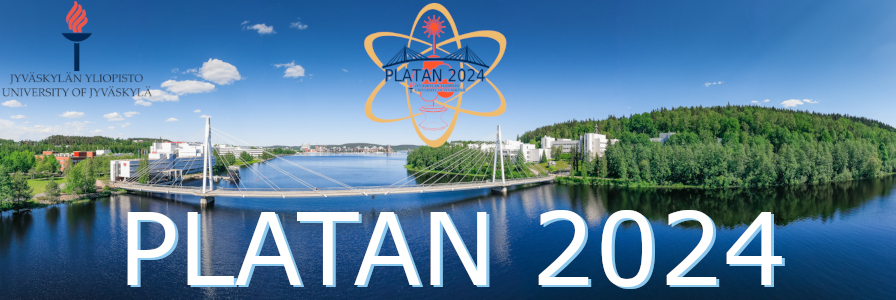Speaker
Description
Laser spectroscopy experiments are an important tool for nuclear structure studies, providing nuclear-model independent observables that serve as anchor points for theoretical models. For the superheavy elements (Z ≥ 104), where stability is enhanced by shell effects, laser spectroscopy allows for detailed investigations of such nuclear observables as charge radii, nuclear moments and spin[1]. And the technique’s high efficiency and sensitivity make it possible to work with atom-at-a-time production rates, characteristic for this region of the nuclide chart.
JetRIS[2,3] is an in-gas-jet resonant ionization spectroscopy setup, which accepts a high-energy beam of radioactive ions, neutralizes and re-ionizes them in a hyper-sonic gas jet with high resolution (approx. 200 MHz in the actinide region[4]), allowing for the production of isotopically and isomerically pure beams[5]. Inside the gas cell, reaction products are guided with DC electric fields towards a heated filament. The collected ions are promptly re-evaporated as neutrals close to the nozzle throat, achieving target-to-detector times well below 300 ms. Currently, in order to separate the signal from background, the detection stage is comprised by a silicon detector[6], however, a modification of the system to include an Multi-Reflection Time-of-Flight (MRToF) stage for mass-selected ion detection is planned, which will expand the range of isotopes available for study beyond alpha-emitters with suitably short lifetimes.
In this talk, we report on the results obtained in the 2022 beamtime[7] and the following offline optimization performed with the aim to improve the system’s efficiency. Already implemented modifications and their effects on the measured extraction time and efficiency using an offline radioactive recoil ion source are compared to the results of detailed COMSOL Multiphysics simulations of JetRIS. The numerical model provides a deeper insight into the setup’s operation, guiding further developments and highlighting potential pitfalls during online operation.

